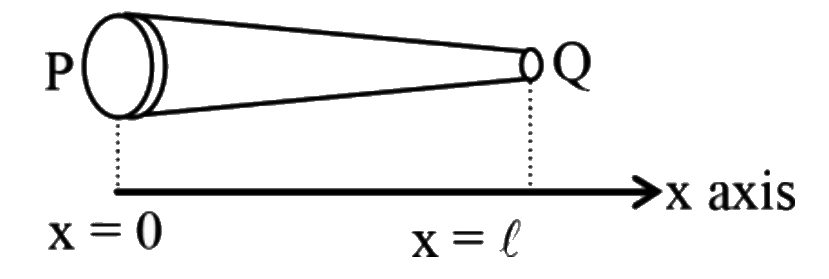A potential difference is applied across the ends of a metallic wire. If the potential difference is doubled, the drift velocity will
be doubled
be halved
be quadrupled
remain unchanged
The correct Answer is:A
To solve the question regarding the effect of doubling the potential difference on the drift velocity in a metallic wire, we can follow these steps:
1. Understand the Relationship: The drift velocity (Vd) of charge carriers in a conductor is related to the electric field (E) produced by the potential difference (V) across the wire. The relationship can be expressed as:
Vd∝E
2. Express Electric Field: The electric field (E) in the wire can be defined as:
E=VL
where L is the length of the wire.
3. Substitute Electric Field into Drift Velocity: Since the drift velocity is proportional to the electric field, we can write:
Vd∝VL
4. Consider Doubling the Potential Difference: If the potential difference is doubled, we can represent this as:
V′=2V
5. Recalculate the Drift Velocity: Substituting the new potential difference into the equation for drift velocity gives:
V′d∝V′L=2VL
This indicates that the new drift velocity (V′d) is:
V′d=2⋅Vd
6. Conclusion: Therefore, if the potential difference is doubled, the drift velocity will also double.
Final Answer:
The drift velocity will be doubled.
---
Vd∝E
E=VL
where L is the length of the wire.
Vd∝VL
V′=2V
V′d∝V′L=2VL
This indicates that the new drift velocity (V′d) is:
V′d=2⋅Vd
The drift velocity will be doubled.
Topper's Solved these Questions
- CURRENT ELECTRICITYBOOK - MHTCET PREVIOUS YEAR PAPERS AND PRACTICE PAPERSCHAPTER - CURRENT ELECTRICITYEXERCISE - EXERCISE 2
26 Videos
- COMMUNICATION SYSTEMBOOK - MHTCET PREVIOUS YEAR PAPERS AND PRACTICE PAPERSCHAPTER - COMMUNICATION SYSTEMEXERCISE - MHC CET Corner
6 Videos
- ELASTICITY BOOK - MHTCET PREVIOUS YEAR PAPERS AND PRACTICE PAPERSCHAPTER - ELASTICITY EXERCISE - MHT CET CORNER
16 Videos
Similar Questions
A wire of length l tapers uniformly from end P to end Q with the diameter at P twice that at Q. A potential difference is applied across the ends of the wire. Which graph represents the variation of the drift velocity V of the conduction electrons with distance x?

View SolutionA potential difference V is applied across a wire of length I and thickness d. If value of V is doubled, the drift velocity
View Solution
Knowledge Check
When a potential difference is applied across the ends of a linear metallic conductor
AThe free electrons are accelerated continuously from the lower potential end to the higher potential end of the conductorBThe free electrons are accelerated continuously from the higher potential end to the lower potential end of the conductorCThe free electrons acquire a constant drift velocity from the lower potential end to the higher potential end of the conductorDThe free electrons are set in motion from their position of restA potential difference (V) is applied across a length of thickness d. if a wire of length of the wire is doubled, the drift velocity
Abecomes zeroBbecomes doubleCbecomes halfDemains sameA potential difference (V) is applied across a length 7 of thickness d. if a wire of length of the wire is doubled, the drift velocity
Abecomes zeroBbecomes doubleCbecomes halfDremains same
A potential difference V is applied across a coper
wire of diameter d and length l. When d is doubled,
the drift velocity:-
View SolutionA potential difference (V) is applied across a wire of thickness d and length I. If thickness is doubled the drift velocity
View SolutionA potential difference Vis applied across a wire of length I and thickness d. If value of Vis doubled, the drift velocity
View SolutionA potential difference of Vis applied at the ends of a copper wire of length I and diameter d. On doubling only d, drift velocity
View SolutionA potential difference of V applied at the ends of a copper wire of length l and diameter d. On doubling only d drift velocity.
View Solution
